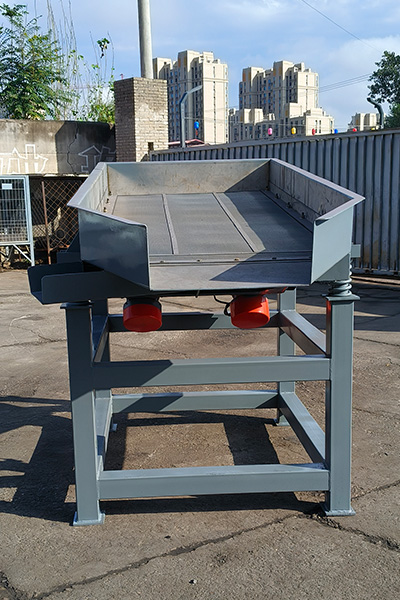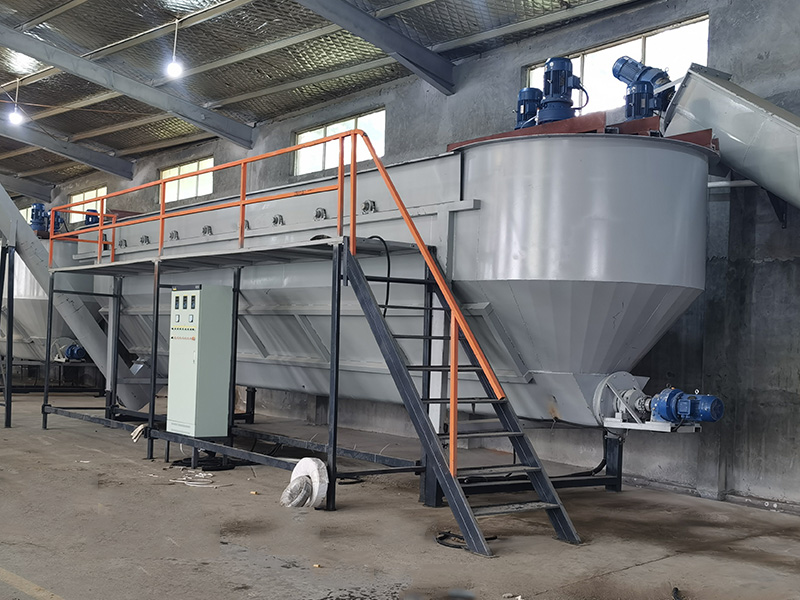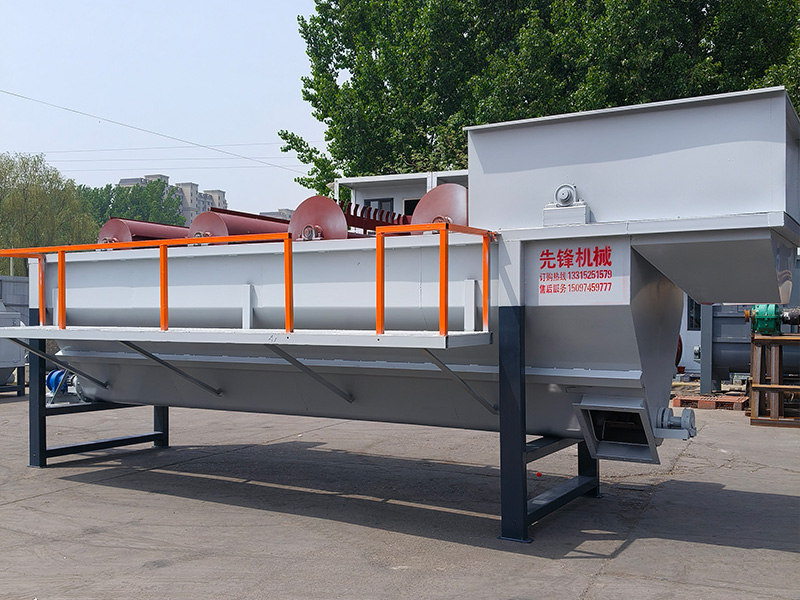Understanding the Importance of Vibrating Screens in Material Processing
Understanding the Importance of Vibrating Screens in Material Processing
Table of Contents
1. Introduction to Vibrating Screens
2. How Vibrating Screens Work
3. Different Types of Vibrating Screens
3.1 Linear Vibrating Screens
3.2 Circular Vibrating Screens
3.3 High-Frequency Screens
4. Applications of Vibrating Screens in Vari
Aug 07,2025

Understanding the Importance of Vibrating Screens in Material Processing
Table of Contents
- 1. Introduction to Vibrating Screens
- 2. How Vibrating Screens Work
- 3. Different Types of Vibrating Screens
- 4. Applications of Vibrating Screens in Various Industries
- 4.1 Mining and Aggregates
- 4.2 Construction and Demolition
- 4.3 Recycling
- 4.4 Food and Pharmaceutical Industries
- 5. Benefits of Using Vibrating Screens
- 6. Maintenance Tips for Optimal Performance
- 7. The Future of Vibrating Screens in Material Processing
- 8. Conclusion
- 9. Frequently Asked Questions (FAQs)
1. Introduction to Vibrating Screens
In the realm of material processing, **vibrating screens** hold a pivotal role in enhancing efficiency and productivity. These machines are designed to separate and classify materials in various industrial applications. By employing a combination of gravitational and vibrational forces, vibrating screens allow for the sorting of materials based on size and weight. Their versatility and reliability make them an indispensable component in multiple sectors, including mining, construction, recycling, and food processing.
2. How Vibrating Screens Work
Vibrating screens operate by utilizing a motor to create vibrations that facilitate the movement of materials across the screening surface. The design typically includes a screen box with one or more screen surfaces and a drive mechanism. The vibrations cause the materials to stratify, allowing smaller particles to pass through the openings while larger particles remain on top.
This **mechanical separation** process is highly efficient, enabling operators to achieve precise classifications of aggregates or other materials. The combination of amplitude, frequency, and incline angle can be adjusted to optimize the screening process, ensuring maximum productivity.
3. Different Types of Vibrating Screens
There are several types of vibrating screens, each tailored to specific applications and material types. Understanding these variations can help industries choose the most suitable option for their needs.
3.1 Linear Vibrating Screens
Linear vibrating screens feature a linear motion and are commonly used for screening fine particles. The screen surface is typically flat, and the vibration is produced by two out-of-balance motors. This type of screen is ideal for applications requiring high capacity and efficiency.
3.2 Circular Vibrating Screens
Circular vibrating screens operate in a circular motion, making them suitable for separating larger particles. The motion created allows for effective stratification of materials, enhancing the separation process. This type of screen is often employed in mining and quarrying.
3.3 High-Frequency Screens
High-frequency screens utilize a different approach by incorporating higher vibration frequencies. This technology is particularly beneficial for screening fine materials, as it helps prevent clogging and enhances throughput. These screens are often used in the mining and recycling industries.
4. Applications of Vibrating Screens in Various Industries
Vibrating screens are widely applicable across various sectors, each benefiting from their unique capabilities.
4.1 Mining and Aggregates
In the mining industry, vibrating screens are critical for processing ores and aggregates. They help separate valuable minerals from waste material, ensuring efficient resource extraction. The ability to handle high volumes of material makes them an essential tool for mining operations.
4.2 Construction and Demolition
During construction and demolition, vibrating screens are used to sort and recycle materials. They assist in separating concrete, metals, and other debris, promoting sustainable practices in construction. This process not only reduces waste but also supports the reuse of materials.
4.3 Recycling
Vibrating screens play a significant role in the recycling industry by efficiently processing mixed materials. They help in the classification of plastics, metals, and glass, ensuring the recovery of valuable resources and reducing landfill waste.
4.4 Food and Pharmaceutical Industries
In the food and pharmaceutical sectors, vibrating screens are crucial for ensuring product quality and safety. They help in the separation of contaminants and ensure that only the desired particle sizes are used in production. The hygienic design of these screens complies with strict industry standards.
5. Benefits of Using Vibrating Screens
The integration of vibrating screens offers numerous advantages that enhance overall operational efficiency.
1. **Increased Efficiency**: They enable continuous material flow, reducing downtime and increasing productivity.
2. **Improved Quality**: By classifying materials accurately, they ensure high-quality outputs, which is especially important in food and pharmaceutical applications.
3. **Cost-Effectiveness**: The long lifespan and low maintenance requirements of vibrating screens contribute to reduced operational costs.
4. **Versatility**: They can efficiently handle various materials, making them suitable for multiple industries.
5. **Customizability**: Different screen designs and configurations allow for tailored solutions to meet specific application needs.
6. Maintenance Tips for Optimal Performance
To ensure the longevity and efficiency of vibrating screens, regular maintenance is essential. Here are some key maintenance tips:
1. **Routine Inspections**: Regularly check for wear and tear on screen surfaces and replace them as necessary.
2. **Lubrication**: Keep all moving parts properly lubricated to prevent corrosion and reduce friction.
3. **Vibration Analysis**: Monitor vibration levels to detect any irregularities that may indicate potential issues.
4. **Screen Tension**: Ensure proper tension of the screen mesh to maintain efficient separation.
5. **Cleaning**: Regularly clean the screens to prevent buildup of material, which can hinder performance.
7. The Future of Vibrating Screens in Material Processing
As industries evolve, the demand for advanced screening technologies will continue to grow. Innovations such as **smart vibrating screens** equipped with IoT technology and advanced sensors are expected to enhance operational performance. These developments will allow for real-time monitoring, predictive maintenance, and increased automation, further optimizing material processing.
The future of vibrating screens will focus on sustainability, with designs aimed at reducing energy consumption and minimizing waste. Industry leaders are continually investing in research and development, ensuring that vibrating screens remain integral to material processing solutions.
8. Conclusion
Vibrating screens are essential in the material processing industry, providing many benefits such as enhanced efficiency, improved product quality, and cost-effectiveness. Their versatility across various applications, from mining to recycling, underscores their importance in modern manufacturing processes. By understanding the functionality, types, and maintenance of vibrating screens, businesses can maximize their potential and contribute to sustainable practices in their respective industries.
9. Frequently Asked Questions (FAQs)
1. What materials can be processed using vibrating screens?
Vibrating screens can process a wide range of materials, including ores, aggregates, plastics, metals, and food products.
2. How often should vibrating screens be maintained?
Regular maintenance should be conducted based on the frequency of use, but inspections and cleaning should be performed at least monthly to ensure optimal performance.
3. What are the different applications of vibrating screens?
Vibrating screens are used in mining, construction, recycling, food processing, and pharmaceutical industries for material classification and separation.
4. How do I choose the right vibrating screen for my application?
Selecting the right vibrating screen depends on factors such as material type, desired separation size, throughput requirements, and operational environment.
5. Are there any advancements in vibrating screen technology?
Yes, advancements include IoT integration, smart monitoring systems, and designs focused on energy efficiency and sustainability, enhancing overall operational efficiency.
TAG:
Contact Us
E-mail :
Phone/WhatsApp:
Address:
Shunping, Baoding City, Hebei Province









